- Since 1886 Jamestown Business College has been dedicated to providing students with outstanding career-oriented associate degree and certificate programs. This tradition continues into the 21st century with programs of study offering a quality business education and the technical skills needed in today's workplace.
School Highlights
Jamestown Business College serves 353 students (100% of students are full-time).
The college's student:teacher ratio of 17:1 is higher than the state community college average of 13:1.
Minority enrollment is 35% of the student body (majority Hispanic), which is less than the state average of 62%.
Quick Stats (2025)
- Enrollment: 353 students
- Private-state tuition: $12,000
- Acceptance Rate: 86%
- Student:teacher ratio: 17:1
- Minority enrollment: 35%
- Source: Integrated Postsecondary Education Data System (IPEDS)
Top Rankings
Jamestown Business College ranks among the top 20% of public schools in New York for:
Category
Attribute
School Resources
School Overview
The teacher population of 21 teachers has stayed relatively flat over five years.
Jamestown Business College
(NY) Community College Avg.
Carnegie Classification
Special Focus Four-Year: Business & Management Schools
Baccalaureate/Associate's Colleges: Mixed Baccalaureate/Associate's
Institution Level
Four or more years
At least 2 but less than 4 years
Institution Control
Private for-profit
Private not-for-profit
Total Faculty
21 staff
158 staff
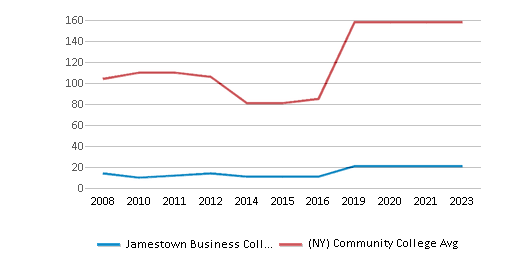
School Calendar
Student Body
The student population of Jamestown Business College has grown by 15% over five years.
The student:teacher ratio of 17:1 has increased from 14:1 over five years.
The Jamestown Business College diversity score of 0.54 is less than the state average of 0.76. The school's diversity has grown by 6% over five years.
Total Enrollment
353 students
746 students
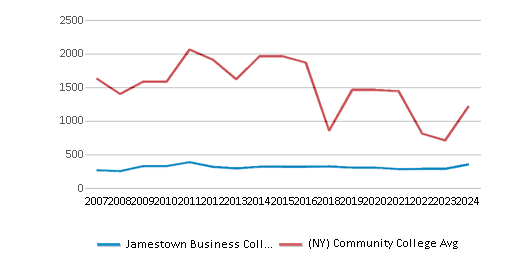
Student : Teacher Ratio
17:1
13:1
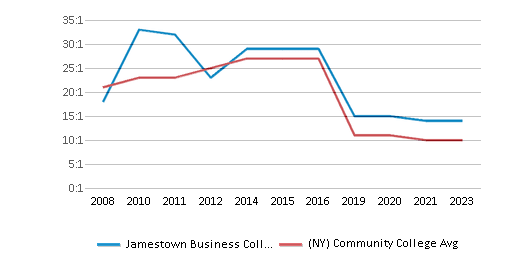
# Full-Time Students
353 students
519 students

# Part-Time Students
5 students
514 students
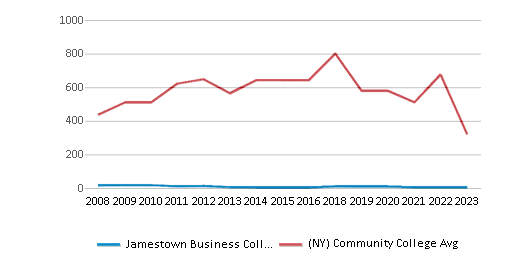
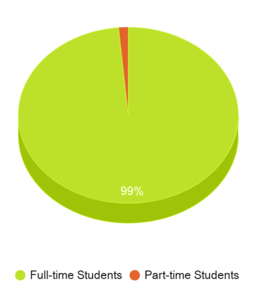
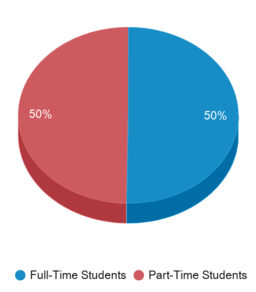
# Enrollment Undergraduate
353 students
357 students
# Full-Time Undergraduate Students
353 students
502 students
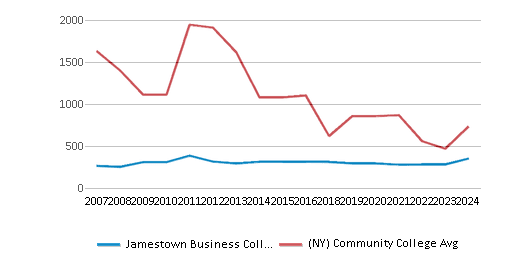
# Full-Time Graduate Students
n/a
44 students
# Part-Time Undergraduate Students
5 students
528 students
# Part-Time Graduate Students
n/a
41 students
Total Dormitory Capacity
n/a
382 students
% American Indian/Alaskan
5%
n/a
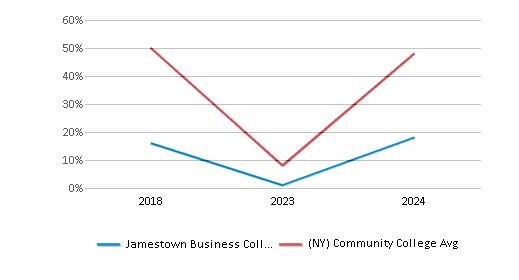
% Asian
1%
8%

% Hispanic
14%
23%
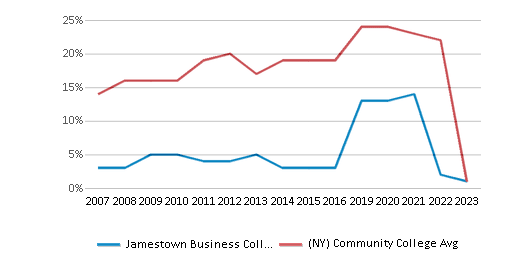
% Black
3%
18%
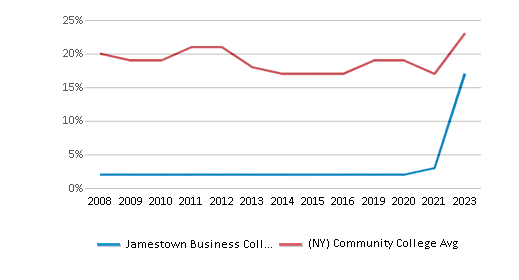
% White
65%
38%
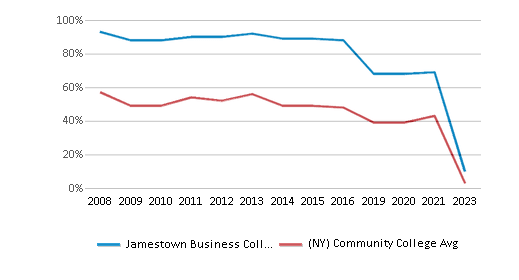
% Hawaiian
n/a
2%
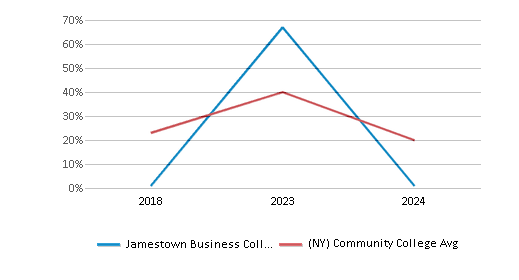
% Two or more races
12%
3%
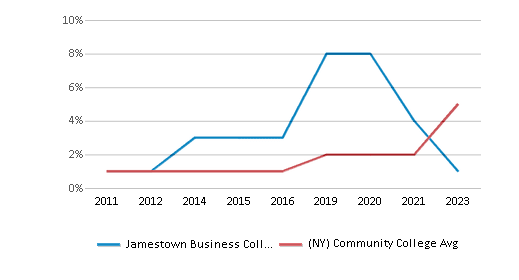
% Non Resident races
n/a
3%

% Unknown races
1%
5%
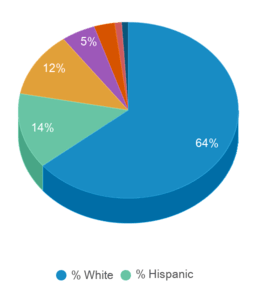
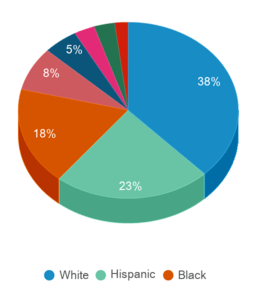
Diversity Score
0.54
0.76
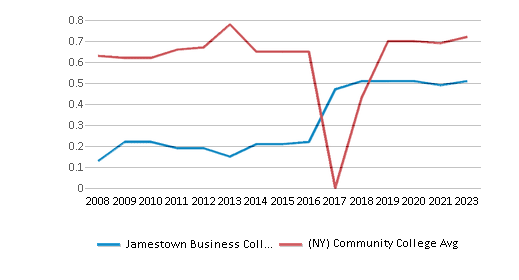
College Completion Rate (Students who graduate in less than 4 years)
50%
27%
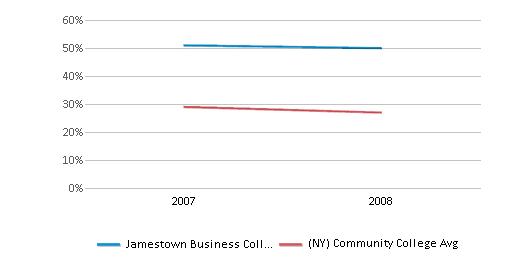
College Completion Rate (Students who graduate in 4 years or more than 4 years)
0.6075%
0.3957%
Average Graduate Earnings (10 Years)
$25,900
$35,200
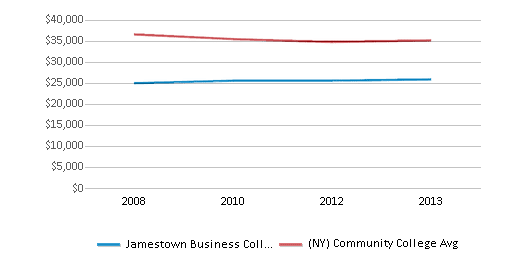
Tuition and Acceptance Rate
The private state tuition of $12,000 is less than the state average of $16,426. The private state tuition has declined by 5% over four years.
Private State Tuition Fees
$12,000
$16,426
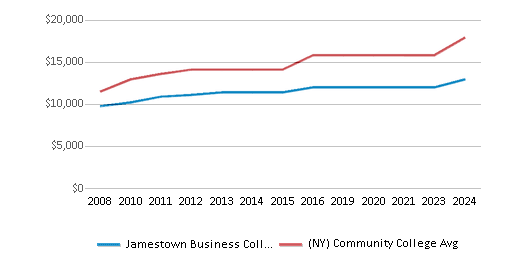
% Students Receiving Some Financial Aid
99%
88%
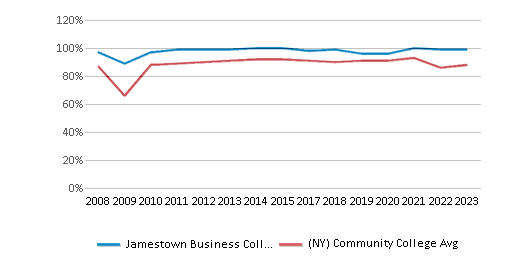
Median Debt for Graduates
$14,000
$13,841
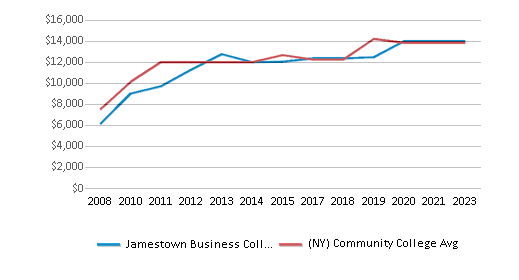
Median Debt for Dropouts
$5,518
$5,500
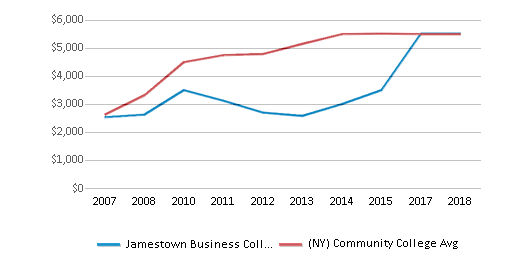
Acceptance Rate
86%
74%
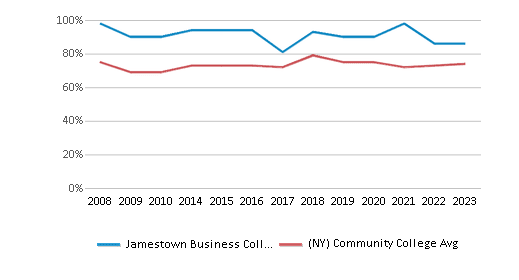
SAT Reading
n/a
475
SAT Math
n/a
505
SAT Writing
n/a
485
ACT Composite
n/a
20
ACT English
n/a
18
ACT Math
n/a
20
Source: 2024 (or latest year available) Integrated Postsecondary Education Data System (IPEDS)
School Notes
- JBC is a private college with about 300 students, just the right size for personalized faculty support and small classes. JBC graduates are skilled in fields of marketing and management, information technology, entrepreneurship, accounting, medical, legal, or general administrative assisting. The college offers degree and non-degree programs that develop professional competencies for business careers and provide a general education to contribute to the intellectual and emotional growth of each student. The various programs meet student needs and the demands of the area community. The campus consists of three connected buildings, a modern two-level structure housing computer labs and classrooms, an administrative building with staff and faculty offices and a classic, historic mansion built around 1900 with classrooms and a student lounge. JBC's location in Jamestown, New York, offers students a wide array of cultural, recreational, and sports activities with a hometown atmosphere unique to a small city. With convenient schedules to fit busy lifestyles, affordability, and career placement, JBC offers the perfect mix for a rewarding and successful college experience.
Frequently Asked Questions
How much does Jamestown Business College cost?
Jamestown Business College's private state tuition is approximately $12,000.
What schools are Jamestown Business College often compared to?
Jamestown Business Collegeis often viewed alongside schools like CUNY Kingsborough Community College by visitors of our site.
What is the acceptance rate of Jamestown Business College?
The acceptance rate of Jamestown Business College is 86%, which is higher than the state average of 74%.
What is Jamestown Business College's ranking?
Jamestown Business College ranks among the top 20% of community college in New York for: Percent of students receiving financial aid.
Recent Articles

Obtaining Your Bachelor's Degree at a Community College
Explore the evolving landscape of community colleges offering bachelor's degrees, addressing affordability, accessibility, and workforce needs.

A to Z of Community College Certificates and Courses
From business and healthcare to technology and skilled trades, the article showcases the breadth of options available to students seeking to enhance their knowledge, develop new skills, or pursue career advancement.

What is a Community College?
This comprehensive guide explains what a community college is, its history, and its role in higher education. It covers the types of programs offered, differences from four-year colleges, benefits of attending, and important considerations for prospective students, providing valuable insights for those exploring educational options.









